Linux-based touchpanel targets elderly homecare
May 12, 2008 — by Eric Brown — from the LinuxDevices Archive — 3 views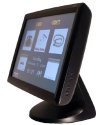 Blue Heron Network has demonstrated an Ubuntu Linux-based touchpanel PC aimed at helping patients in the early stages of neuro-degenerative conditions like Alzheimer's stay independent for as long as possible. The WiFi-enabled [email protected] Monitor keeps homecare patients connected to family and caregivers via the Internet, the company says.
Blue Heron Network has demonstrated an Ubuntu Linux-based touchpanel PC aimed at helping patients in the early stages of neuro-degenerative conditions like Alzheimer's stay independent for as long as possible. The WiFi-enabled [email protected] Monitor keeps homecare patients connected to family and caregivers via the Internet, the company says.
(Click for larger view of [email protected] Monitor)
The goal of [email protected] is to provide long-term independence and care for those with diminished cognitive ability, while also meeting the needs of busy unpaid care providers, says Michael Larabel, Director of Software Development at Blue Heron Network. “The system is very beneficial in keeping those with early stages of Alzheimer's and other neuro-degenerative conditions independent for as long as possible, while maintaining their traditional lifestyle and enhancing the quality of their lives,” said Larabel in an email.

Reside&Home Monitor interface
(Click to enlarge)
Blue Heron Network first started working on the project in 2004, starting with a Windows-based platform, says Larabel, before moving to Ubuntu Linux for better speed, security, and flexibility, as well as lower costs. Linux-based software runs on both the company's servers as well as on the monitor itself.
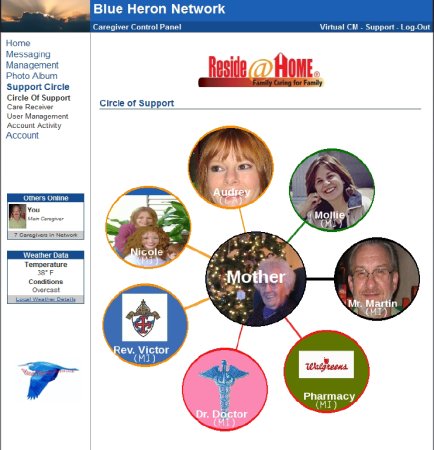
[email protected] Monitor image-based phonebook
(Click to enlarge)
Designed to look more like a TV than a computer, the [email protected] desktop monitor provides semi-automated prompts and reminders to guide care receivers though their daily activities. The system does not currently support direct remote health monitoring features, although that could be added later. Some modifications to the hardware design have been made for elderly patients, says Larabel, who are often computer-illiterate, computer-phobic, or in many cases, cognitively impaired. These include the ability to withstand a rough washing with soapy water, as well as the ability to accept touch input from pens and other objects from those who were long ago warned never to touch a TV screen.
The monitor is equipped with an Intel Celeron processor, 512MB of RAM, and a 4GB solid-state drive that can be upgraded to up to 16GB. The initial model will have a 15-inch screen, but the company plans to eventually offer several different models with different screen sizes. The monitor includes an Ethernet connection, as well as WiFi and optional cellular modem connections.
A web-based control panel lets family members or caregivers remotely author, schedule, administer, manage, and edit a care receiver's calendar and schedule, says Blue Heron. Remote caregivers can manage the address book, display photographs on the monitor, and send one-time or recurring automated email messages to remind the users to take medicines or perform other tasks. The primary caregiver can provide web-based monitoring access to other caregivers, offering different levels of access, so for example, a pharmacist might be limited to sending reminders of prescription availability.
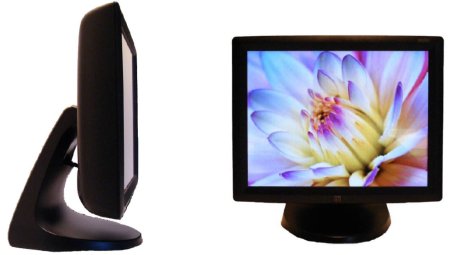
Two views of the [email protected] Monitor
(Click to enlarge)
On the monitor side, the users can take advantage of remotely or locally customizable options such as an image-based phone book, large type, audio levels, and text-to-speech features. Users can also alert caregivers on their cell phones via SMS text messaging if there are problems or to acknowledge message receipt. The interface also provides optimizations for Macular Degeneration and other eye impairments.
By avoiding a mouse or keyboard, and going with an entirely touch-based interface, complexity, maintenance requirements, and cable clutter are reduced, says Larabel. In fact, with the WiFi or cellular version, the only wire coming out of the box is the power cable. Meanwhile, the solid-state drive is more durable in case of falls, he says, and helps to reduce maintenance.
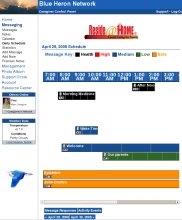
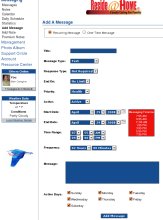
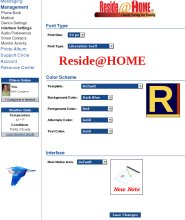
[email protected]'s web-based remote control panel interface
(Click any to enlarge)
A module development framework is available for integration of third-party services, says Blue Heron Network. Integration possibilities include automating the transfer of photos from services such as Flickr. The company is planning to develop a [email protected] module that integrates security cameras and other home sensors into the [email protected] network. Meanwhile, possible future enhancements to the web-based control panel include versions optimized for Mobile Internet Devices (MIDs) and smartphones, enabling features such as “sending an audio message from a smartphone and better integrating a phone's camera capabilities,” says Larabel.
The need for home healthcare devices such as [email protected] is growing fast, says Larabel. He points to U.S. Department of Health statistics that document over 9.2 million care recipients over the age of 65 — a number that is set to grow rapidly. Some 80 percent of those who receive long-term care receive it from a family member or a friend. Meanwhile, over 33 million adults are said to provide unpaid care to a recipient who is 50 or older, typically while holding down a full time job, and often caring for their own families.
Linux was also used earlier in a similar service, DataBalk's ZorgTV (“CareTV” in English) product.
Availability
Blue Heron Network plans to ship [email protected] by the end of the year. The company publicly demonstrated an advanced prototype of the system in April at the West Michigan Science & Technology Initiative. There are plans to roll out [email protected] in several senior care facilities this year for a last round of controlled testing.
This article was originally published on LinuxDevices.com and has been donated to the open source community by QuinStreet Inc. Please visit LinuxToday.com for up-to-date news and articles about Linux and open source.